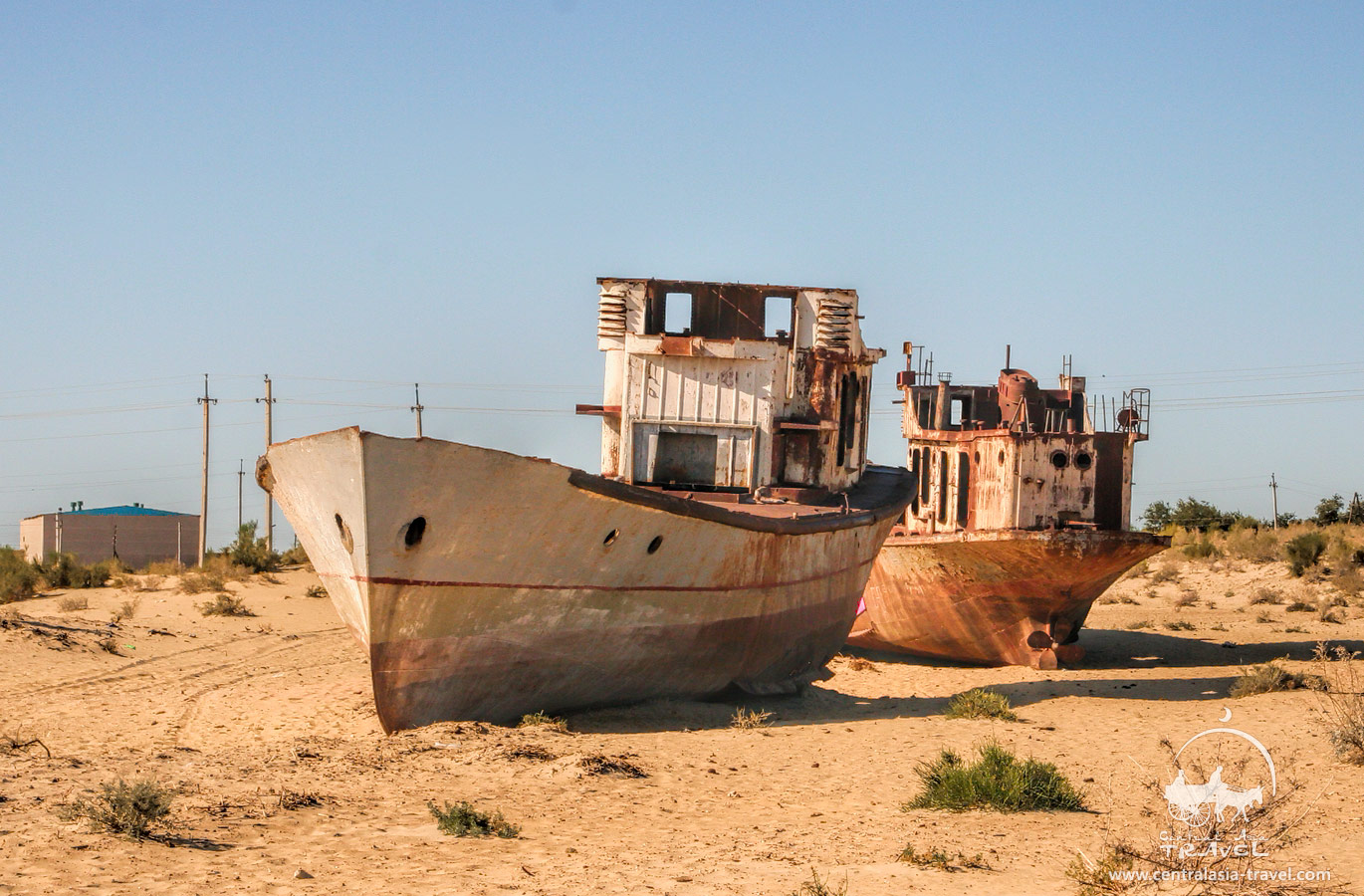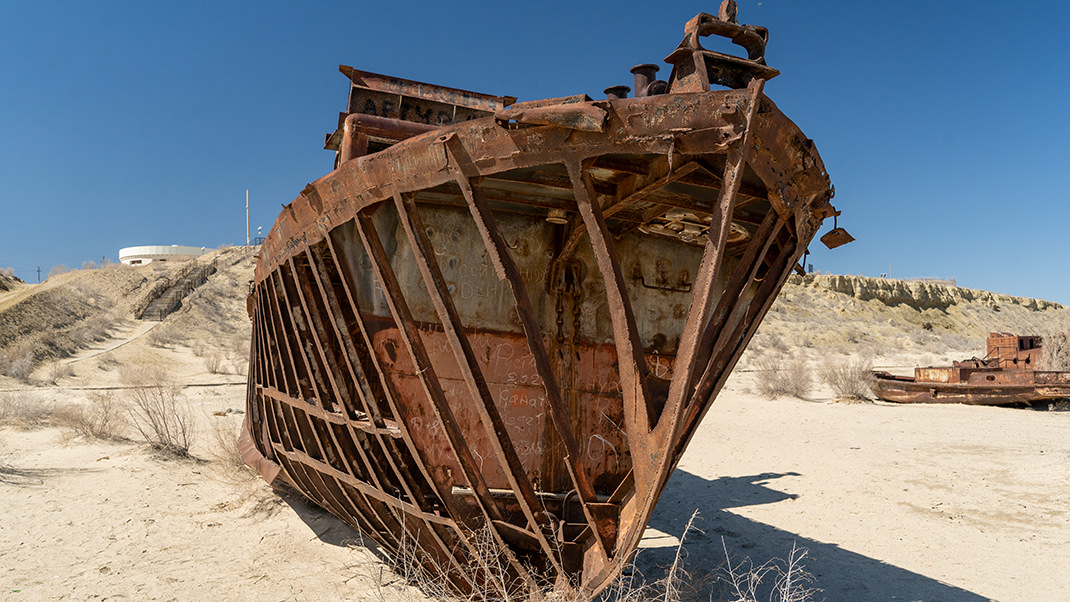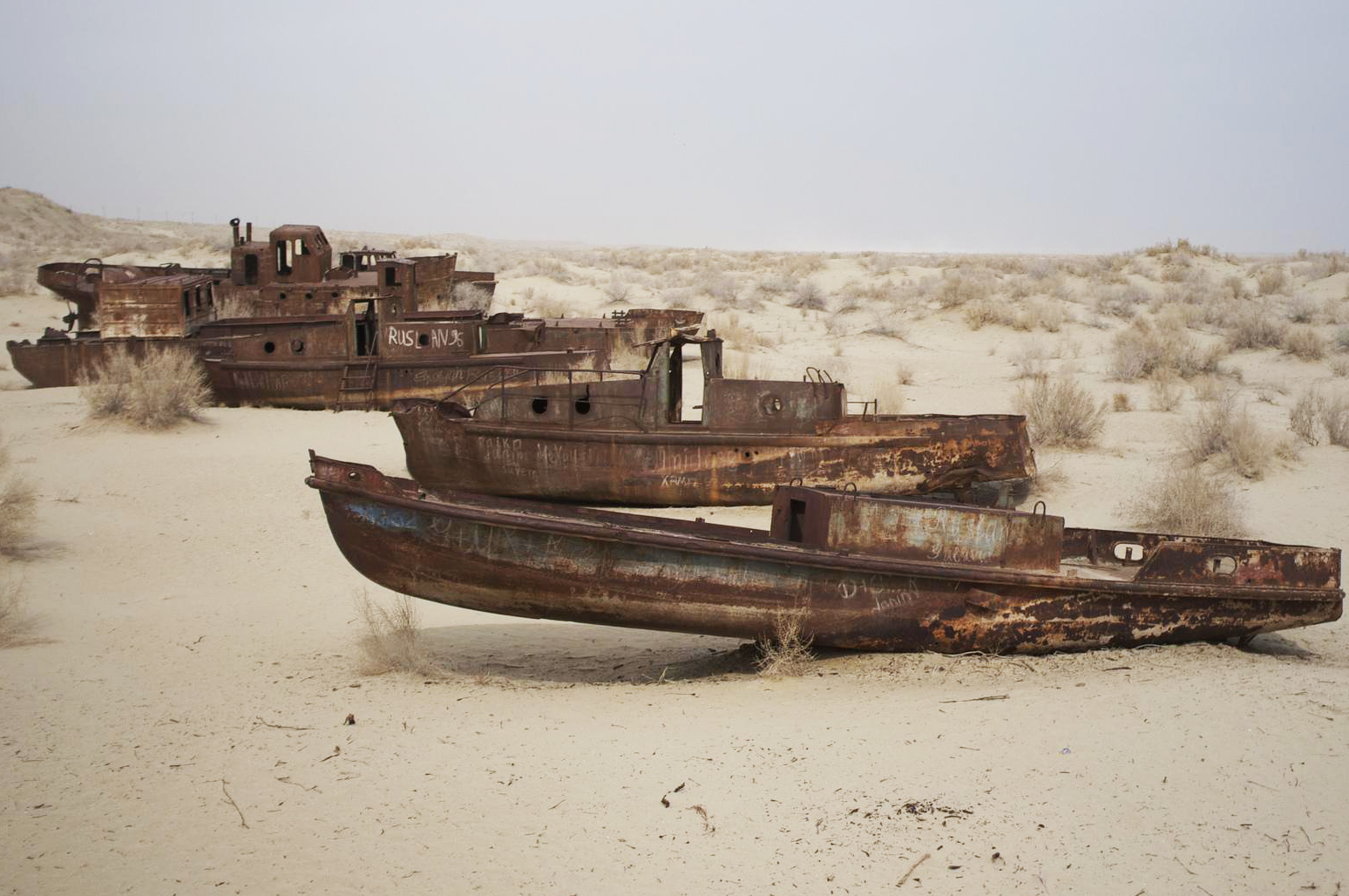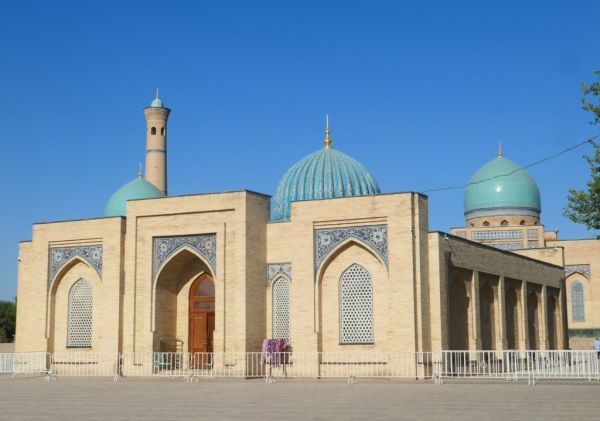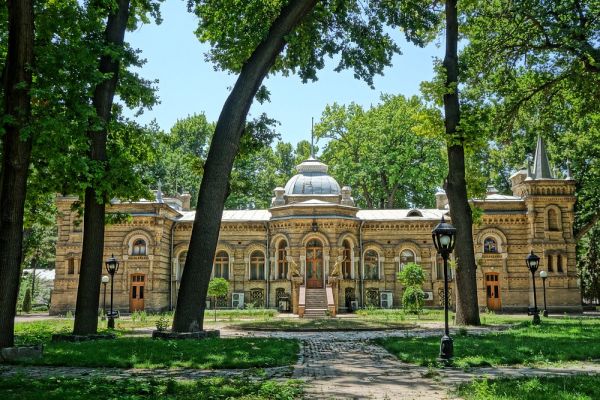Muynak – ship cemetery
They say the astronauts were the first earthlings to see that the Aral Sea was divided into two bodies of water. But it took years before this extraordinary event for the planet was marked on geographical maps.
The Aral Sea is relatively young, according to one hypothesis, it was formed about 10,000 years ago. During its existence, it was shallow twice, but filled up again to 55 meters above sea level. About 56 cubic kilometers of water were supplied to the Aral Sea annually. The fate of the sea was decided back in the last century, when, in the interests of cotton growing, the waters of the Amu Darya and Syr Darya, which flowed into the Aral Sea, were diverted into irrigation channels. Since the late 60s of the last century, the flow of the great Central Asian rivers began to decline - cotton fields, whose areas were growing rapidly, required intensive watering. The Aral Sea as an integral water area ceased to exist when its level became less than 40 meters. The sea split into two reservoirs: the southern one, larger in size, joined Uzbekistan along with the Amu Darya, and the northern one, fed by the Syr Darya and ceded to Kazakhstan.
By the beginning of the third millennium, the sea had lost three quarters of its water volume, and the surface area had decreased by more than half, the coastline had retreated by 100-150 kilometers. Vozrozhdenie Island, located approximately in the middle of the sea, turned into a peninsula. In the Amu Darya Delta, many branches have dried up, small lakes have become shallow and dried up. The tugai thickets, inhabited by muskrat and pheasant, thinned out. The climate has changed not only in the Aral Sea region, but also in the central and southern regions of Uzbekistan and even in neighboring countries. Environmental degradation has led to the disappearance of kulans, argali, striped hyenas, and cheetahs in the Aral Sea region. The saiga population is on the verge of extinction. In the Aral Sea region, more than half of the gene pool of the plant and animal world has been lost.
With a decrease in the volume of water in the sea, the salt concentration increased by two and a half times. Mineralization also increased due to fertilizers washed out by the Amu Darya and Syr Darya from the fields. Gradually, it reached such a level that almost the entire Aral fauna died or mutated. The fish riches of the sea seemed inexhaustible before. 38 species of fish, including carp, bream, and rapeseed, served as the subject of fishing. Nowadays, industrial fishing is a thing of the past, freshwater fish and such endemics as the Aral thorn, a relative of the sturgeon, and the Syrdarya shovelnose have disappeared.
A striking example of an environmental disaster is Muinak, which for a long time was the largest port of Karakalpakstan and the center of the fishing industry in the Aral Sea. Having received the status of a city in 1963, it had more than 100 thousand inhabitants in fifteen to twenty years. Now its population has almost tripled, and the depletion of wildlife has led to an outflow of people. The city was dying along with the sea. Back in the 80s, the Muynak fish processing plant, due to a reduction in the catch of local fish, was forced to switch to the production of canned food from imported raw materials, in particular, from frozen Baltic sardinella. When the sea became catastrophically shallow and the coast became bare, people tried to keep in touch with the sea. They built a floodplain, dug channels through which ships could approach the berths and warehouses. But it soon became clear that this was an empty idea – the Aral Sea was leaving too quickly. Previously, here, on the approach to Muinak, the width of the Amu Darya was at least three and a half kilometers, now it does not exceed three hundred meters even in high water. In some years, the Amu Darya water simply did not reach the dying sea, and drinking water had to be delivered to Muinak by helicopters.
A memorial obelisk was once erected in the center of Muynak. From here, just some thirty years ago, there was a wonderful view of the water going over the horizon. Now, wherever you look, there is sand and thickets of saxaul everywhere. Huge concrete boxes of fish warehouses have been preserved in the area of the former port. The fishy smell still lingers here. It seems that the last catch was sent for recycling only yesterday. Abandoned fishing vessels, small kayaks and imposing longboats, rust in the sand where the harbor used to be. Half-buried in sand and loess dust, stripped to their skeletons, they resemble the skeletons of giant marine animals washed up on a deserted shore. Some ships have already been cut up for scrap, others are awaiting their fate, but several ships have been preserved so much that, as they say, if the sea suddenly returns, they will be suitable for fishing again.
Muinak has turned into a huge graveyard of ships and gives the impression of a tragic monument to the ecological disaster of the Aral Sea, created by human hands.
Nevertheless, there is a real possibility of saving the sea. A few years ago, the Kokaral dam with nine locks was built in the northern Kazakh part of the Aral Sea, which regulates the volume of water coming from the Syr Darya. And the water began to arrive, and so rapidly that its excess is discharged into the southern, Uzbek part of the sea. Flocks of pelicans have appeared, gulls are flying over the water, and fishing is resuming. The coastline regains its former shape.
This means that the southern Aral Sea can also be revived. However, Uzbekistan is not yet able to carry out all the necessary measures and erect the necessary hydraulic structures. It is known that scientists from different countries worked on the Kokaral dam project, and its construction, which cost $86 million, was helped by international organizations, including the United Nations, the World Bank and NATO. After all, the Aral Sea crisis has clearly demonstrated the situation that can arise in many regions of the world in the context of global climate change, and its consequences are interrelated with the solution of environmental, social, economic and political problems.
